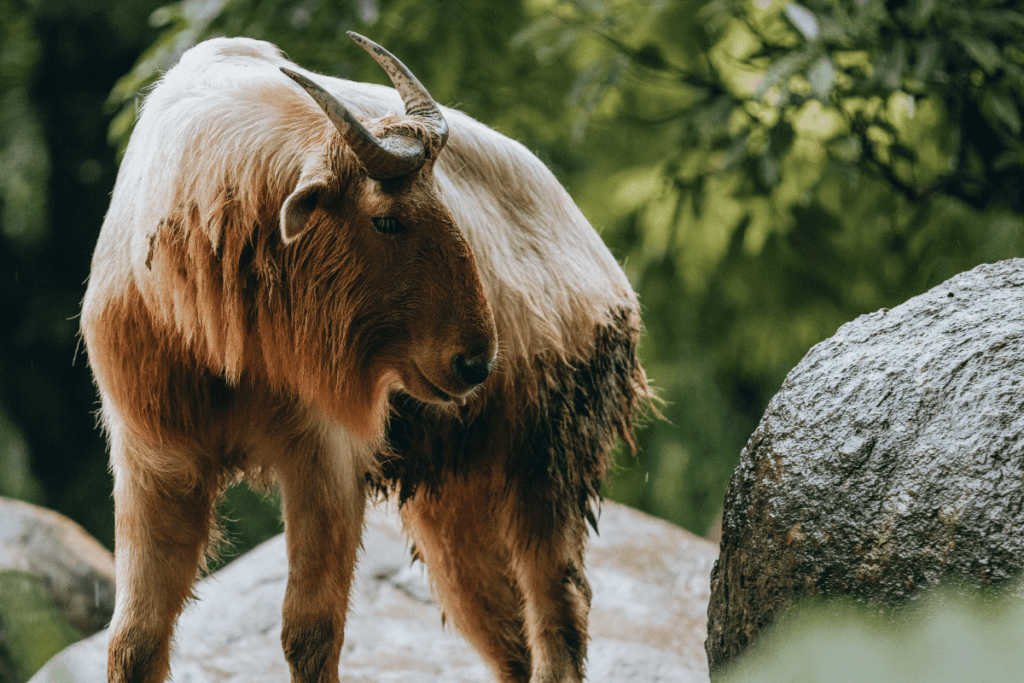
If you’ve ever been to Estes Park, Colorado, you know how much people loooooovvveeeee their wild animal sightings! (They’re just elk, people!) There’s no denying that seeing wild animals is exciting and can help us feel more connected to the natural world. Unfortunately, animal captivity is a gray area that raises a lot of questions. How can we navigate the boundary between animal enjoyment and animal exploitation? Read on to learn what practices you can use to engage in ethical animal tourism.
First Things First: Where Are They?
So you’re jones-ing for a bear sighting? Wanna take Little Red Riding Hood to a whole new level by showing your kids what real, live wolves look like? Here are some great ways to partake in ethical animal tourism.
Animal Sanctuaries
Animal sanctuaries are places where wounded or unwanted animals that can no longer survive in the wild are brought to live. The animals might come from private owners who can no longer care for them, or from exploitative industries such as circuses, laboratories, or pop-up zoos.
True animal sanctuaries should make every effort to imitate the animal’s natural habitat. They do not breed, buy, sell, or trade animals. They also educate the public and have an advocacy role, actively lobbying for the creation of new laws and enforcement of existing laws that protect animals
Above all, animal sanctuaries put the physical, psychological, and social needs of animals first, unlike zoos which often prioritize visitor needs.
National Wildlife Refuges
National wildlife refuges are public lands that are protected and managed by the U.S. Fish and Wildlife Service. There are 568 national wildlife refuges in the U.S. and over 75% of them are open to the public. (The rest are closed for habitat protection.) Unlike animal sanctuaries, wildlife refuges typically offer recreational activities like hunting and fishing, which are used to manage wildlife populations on the refuge.
Wildlife refuges prioritize the conservation of species native to that region, which means the regulation is different for each refuge. For example, beach fishing is not allowed in Parker River National Wildlife Refuge in Massachusetts in the spring because that’s when a species of bird known as the piping plover breeds and nests. (Cute!)
National Parks and Preserves
National parks and preserves are public lands managed by the National Park Service. National parks experience the most wear and tear from humans, as the priority of these places is recreation and public enjoyment. Visiting these government-regulated lands with reputable/licensed guides can help with education, science, and conservation, and is one way of ensuring that you’re engaging in ethical animal tourism.
Other countries have their own national park systems!
Join us on our Kenya adventure and explore Nairobi National Park, home of Sheldrick Elephant Orphanage, the first and most successful elephant orphan rescue and rehabilitation program in the world.
Ethical Animal Tourism: Do’s and Don’ts
Now that we’ve covered the basics, time for a pop quiz! Here are some do’s and don’ts to keep you on track during your next sanctuary visit:
DO: Your Research
Know before you go… Animal welfare charities like Born Free or the Global Federation of Animal Sanctuaries exist to make sure animal facilities meet a certain standard of care. Check to see if the sanctuary or habitat you plan to visit has been approved by one of these organizations.
DON’T: Feed the Animals (No, Seriously!)
Remember: any animal that is to be reintroduced into the wild should have minimal human contact. This means if you can ride, feed, pet, or take a selfie with a wild animal, you are not at a true animal sanctuary. Any interaction with an animal in a sanctuary should be unforced. (Yes, this does mean you should remove “feeding a baby tiger” from your bucket list… but here are ten amazing travel destinations to add to the list instead!)
DO: Look For Engaging Animal Environments
Hey, animals just wanna have fun! Habitats should offer both physical and psychological stimulation for our furry friends, like climbing structures or pools to cool off in.
DO: Avoid Places with Cramped Pens, Chain Link Fences, or Concrete Floors
True animal sanctuaries should make every effort to imitate the animal’s natural habitat. If you see pacing patterns along the perimeter of an enclosure, this is a sign the animal is not able to roam freely.
What To Do If You Witness Animal Cruelty
If you see facilities or animal treatment that don’t align with an organization’s mission, take action. Start by capturing evidence with photos and videos. Share your photos on social media or review websites such as TripAdvisor. If you’re inside the U.S., you can also contact the local animal control agency. If local authorities are not equipped to deal with animal cruelty cases, and there is no local animal welfare agency available, you can contact the Humane Society. Remember, the more information, the better! Write down dates, times, and specific details to submit along with your photos and video footage.
DO: Expect to Be Educated
Wildlife sanctuaries and refuges are charged with educating the public about environmental stewardship and animal protection. Look for clear signage and personnel geared toward education. Also, look for transparent and educational information about where the animals were found and how they are cared for.
DO: Ask Questions
It’s like your favorite teacher said: there are no stupid questions! Once you’re on-site, ask your tour guide about their commitment to animal welfare. How are funds spent? Does the site follow a set of guidelines? How are animals acquired? (Remember that true animal sanctuaries do not buy, sell, or trade animals.)
When wildlife tourism is done right, communities should be paying to protect our furry friends, not exploit them.
Orrrrrrr… Let us be your CliffsNotes!
4 Adventures With The Travel Yogi With Ethical Animal Tourism
Our adventures are ethical animal tourism at its finest. We do the research for you so you can sit back and enjoy all that Mother Nature has to offer. Our international partners are grounded in sustainability and animal wellness. Here are some wildlife highlights from our carefully-crafted adventures:
1. The Galápagos
What better example of a sustainable and ethical wildlife experience than the Galápagos?! We take you to this UNESCO World Heritage site to marvel at endemic giant tortoises, wild horses, penguins, sharks, marine iguanas, and—our favorite—blue-footed boobies! All but 3% of this string of islands is national park space, with human settlements allowed on only four of the 127 islands.
2. Kenya
Our Kenya adventure is the pinnacle of ethical wellness travel, as we take you to see endangered impalas, giraffes, and rhinos at Cottars 1920s Camp with our global conservancy partner, The Long Run. We also gape at glorious elephants in their natural habitat at Nairobi’s Sheldrick Orphanage, the first and most successful elephant orphan rescue and rehabilitation program in the world.
3. Bhutan
Have you ever heard of a takin? (That’s “TAH-kin”!) It’s the national animal of Bhutan and resembles a cross between a muskox and a goat. On our Bhutan adventure, you’ll get to see a lot of them as we explore the Motithang Takin Preserve, 8.4 acres of forest carefully managed by the Bhutanese government.
The history of this preserve is the perfect example of a country prioritizing ethical animal tourism. The animals were originally kept in a small zoo until the King of Bhutan declared all the animals be released into the wild, deeming it improper for a Buddhist country to keep animals in confinement. But the zoo animals at that point were too dependent on humans to survive on their own, wandering into towns in search of food and quickly becoming a nuisance. So the zoo land was converted into a preserve so the animals could roam freely.
4. Sri Lanka
On your adventure to Sri Lanka, you’ll visit Yala National Park, a combo nature reserve and national park with over 300,000 acres of forests, scrubs, and grasslands, of which only two blocks are open to the public. But from those two blocks, you’ll be able to feast your eyes on the world’s largest concentration of leopards, elephants, and sloth bears, to name a few.
Ready To Love On Some Animals?
At The Travel Yogi, we take “wellness travel” seriously. Consider us your one-stop-shop for ethical animal tourism! We couldn’t call ourselves the pioneers of adventure wellness travel if we didn’t back that up by carefully selecting international partners who share our values. Check out our adventure packages here.

